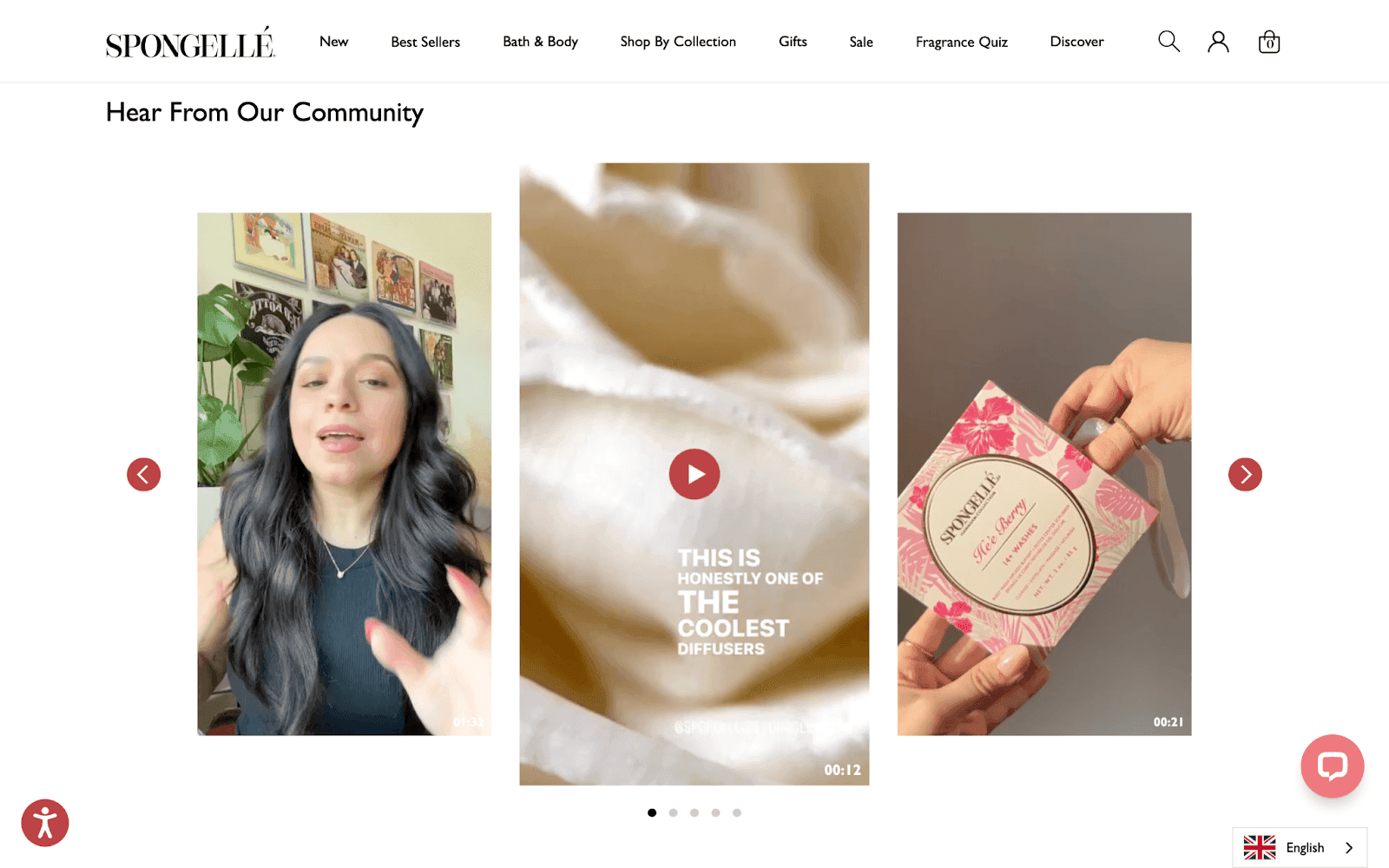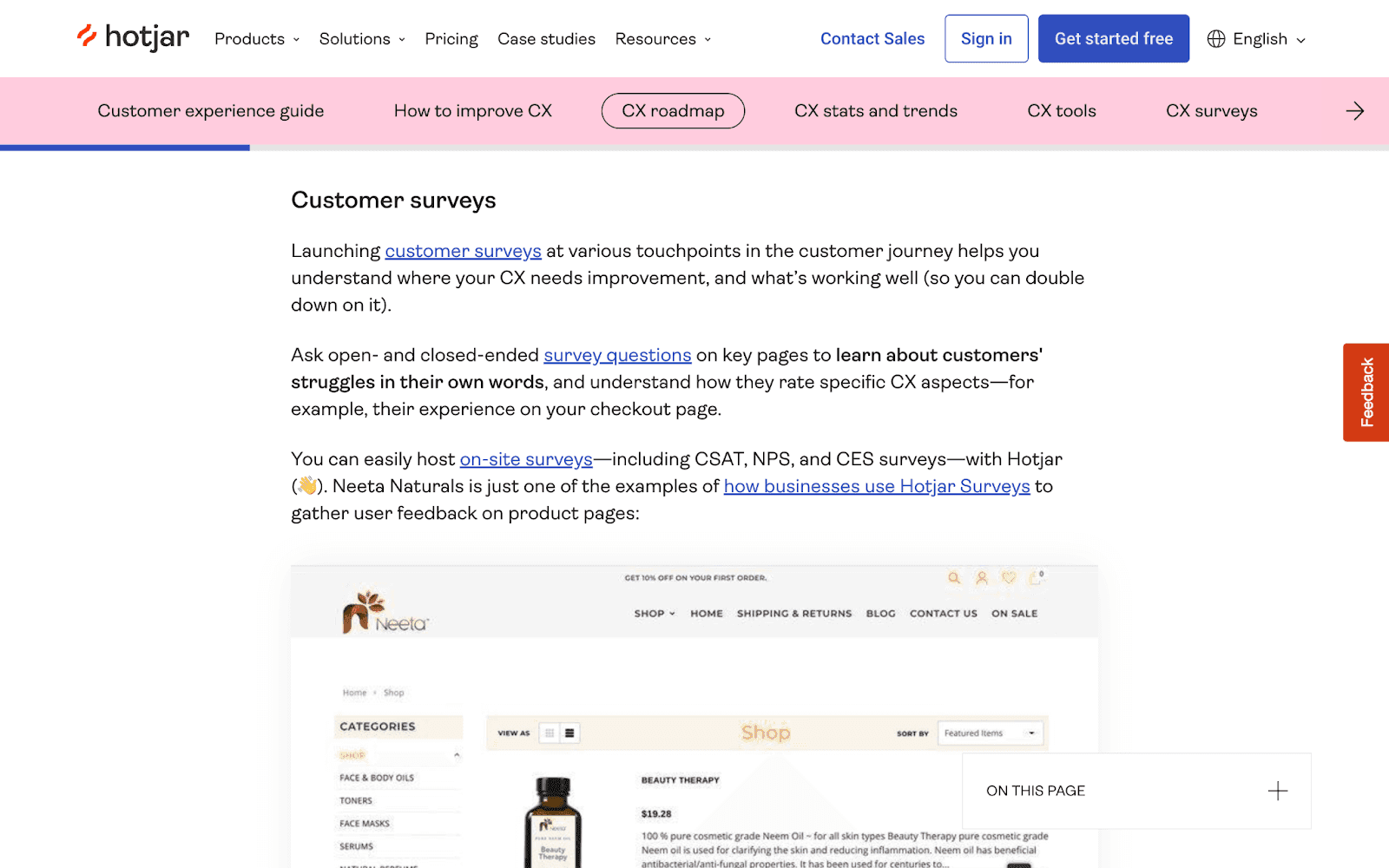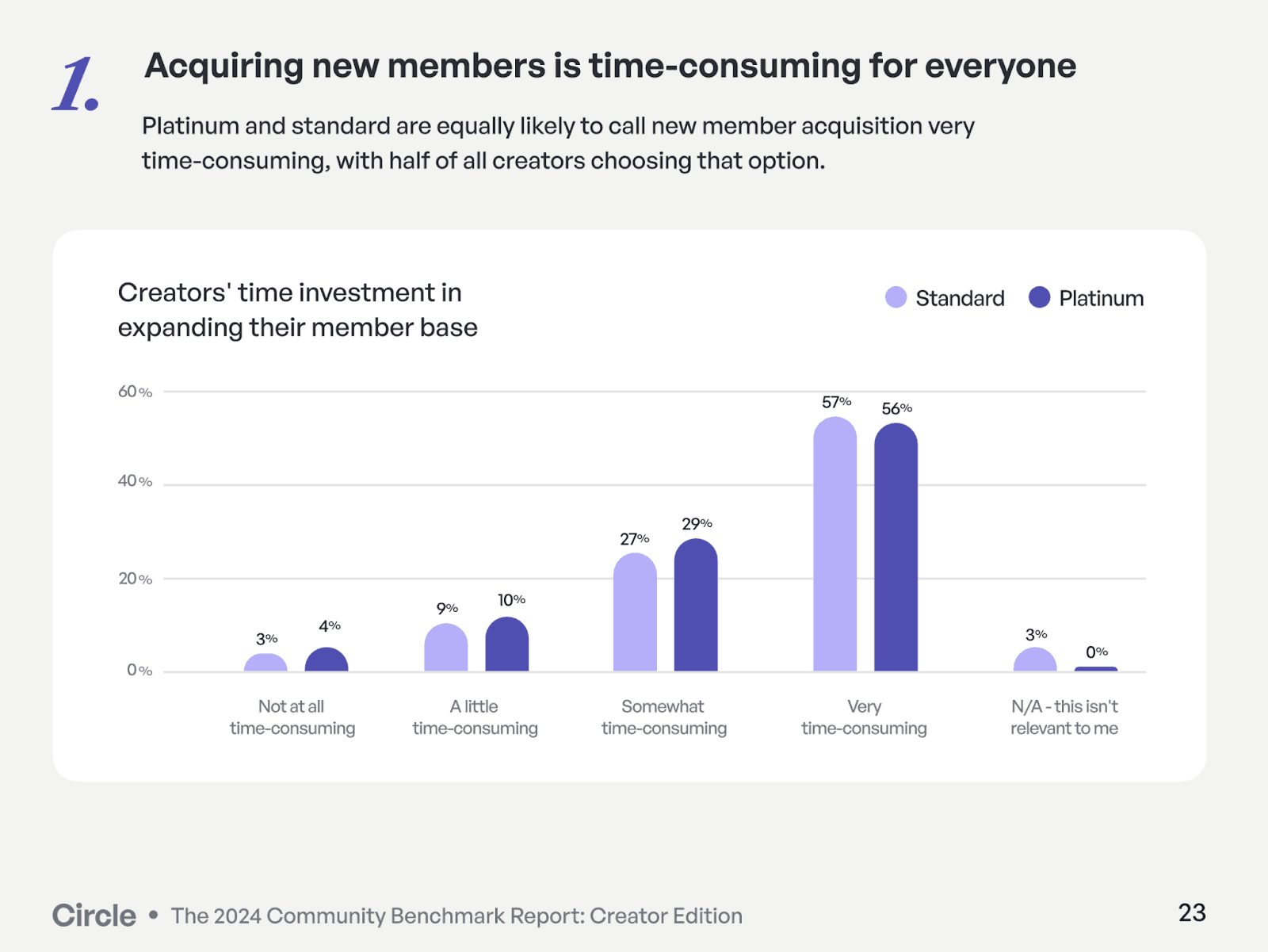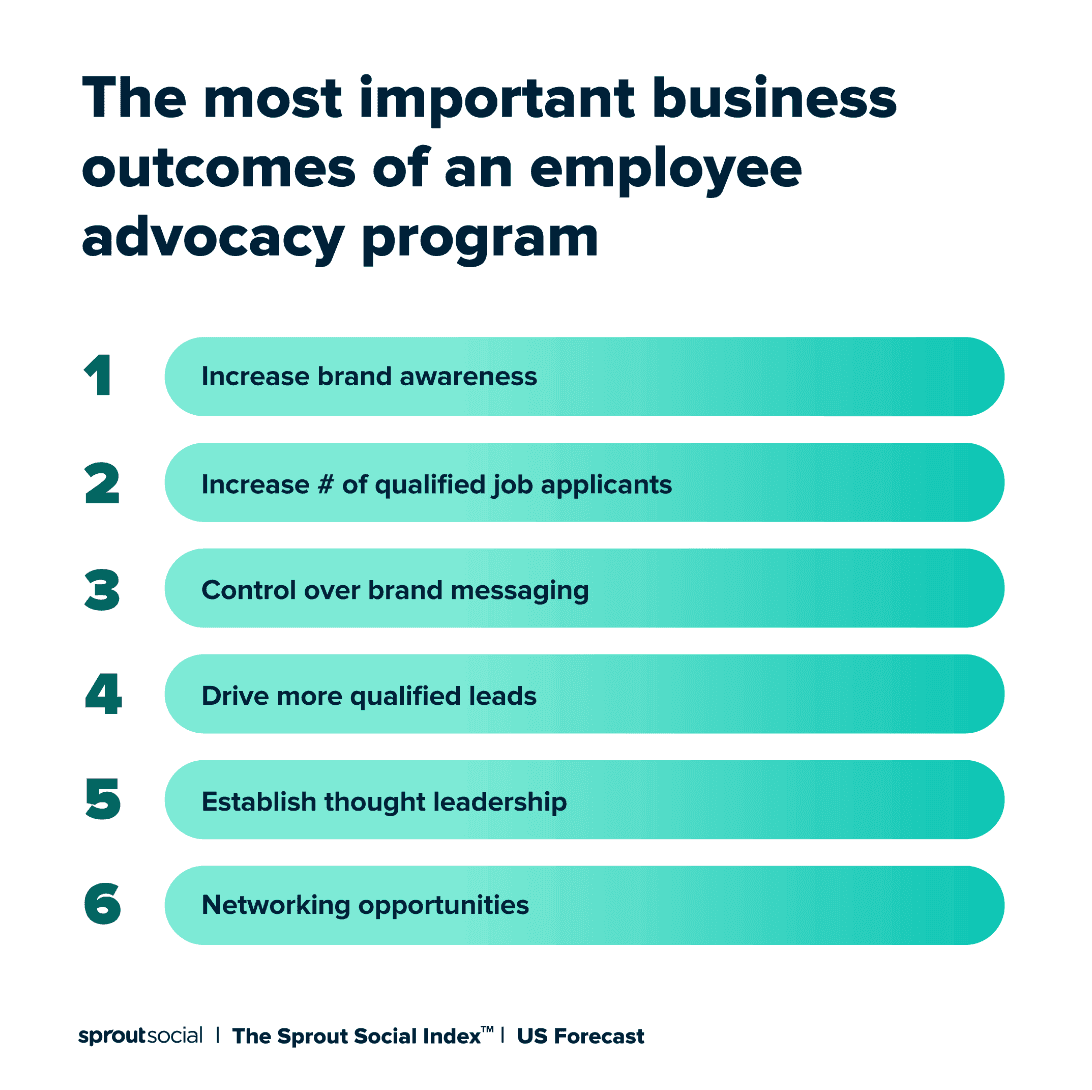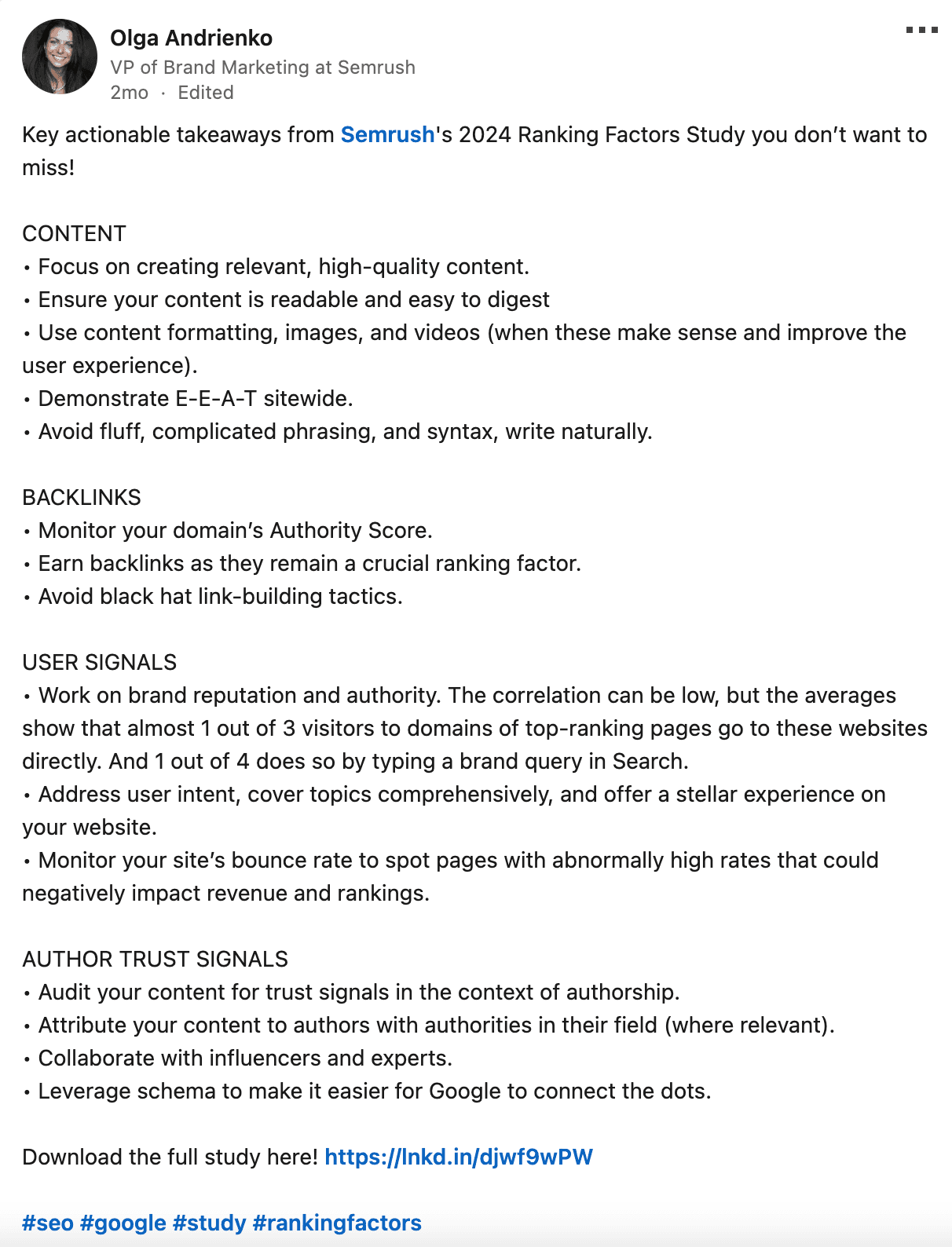Between the increasing use of ad blockers and people hitting the “skip” button on ads faster than you can say knife, winning your buyer’s attention is getting harder.
Thankfully, content marketing offers a viable solution.
Sure creating content that educates and engages your target audience is easier said than done. But plenty of content marketing examples show this form of organic marketing is proven to help you:
- Earn your audience’s trust
- Educate interested folks about your product/service
- Establish your business as an authority in your industry
Want to learn what these results-driving content marketing examples are? Dive in as we dig into specific examples backed with tips to replicate the success of your business.
1. User-Generated Content
User-generated content (UGC), also known as consumer-generated content, is brand-specific content your customers create and share on their social media.
A product unboxing video, for instance, is a piece of user-generated content. Pictures featuring your product, reviews, and testimonials are three more examples.
The best part about this type of content? Since customers create it — rather than your brand — people trust it more.
In fact, UGC acts as a signal of trust, telling potential customers your products/services are worth their investment. 93% of marketers agree customers trust UGC more than the content that brands create.
Make sure you reshare the content customers make on your social media. But don’t stop there. Ask customers’ permission and share UGC on other channels such as your website.
Spongella does this on their homepage to tighten the social proof they offer their site visitors.
Spongella shares UGC on their homepage to showcase brand authenticity to visitors.
You can also host giveaways and challenges to incentivize customers to share content around how they’re using your product. When at it, also encourage people to add a specific hashtag to make it easy for you to track the content.
2. Interactive Content
Interactive content is content that encourages website visitors to engage with it — seeing 52.6% more engagement than static content.
Quizzes, calculators, image sliders, interactive infographics, and tools are all formats you can explore.
Coschedule, for instance, offers a free headline analyzer tool to help people optimize their headlines for better conversion.
Coschedule offers free value to its audience with their interactive headline analyzer tool.
Since it’s a tool folks use in their daily workflow, it offers them significant value — keeping them coming back to our website. In turn, driving leads for CoSchedule.
When planning interactive content for your business, make sure it’s:
- Relevant to your business offer and target buyers
- Personalized so it prompts people to return to your site
As with other content marketing examples, nailing this type of content takes some testing though. So make sure you’re sourcing feedback from users and reviewing your analytics to refine your interactive content.
3. Educational Blog Content
Educational blog posts engage your target audience by answering the questions they have in various formats including:
- Listicles
- How-to pieces
- Comparison articles
- Comprehensive guides
The idea is simple: provide in-depth and actionable answers so people can start trusting your company as an authoritative resource on the topic.
Over time, this trust keeps you on their radar, encouraging them to buy from you when they’re ready.
Recommended Reading: How To Create An Effective Blog Content Strategy In Six Steps
Hotjar, for example, covers topics like conversion rate optimization, website analytics, and customer experience on their blog.
These topics are closest to their product offering and relevant to their audience, which lets them offer readers value as well as educate about their product where relevant.
Hotjar’s blog post on creating a customer experience roadmap educates how their tool can help readers.
Like Hotjar, focus on topic coverage, content depth, and providing tactical insights to readers so your blog content is useful to them. Also:
- Tap into original data, customer research, your experience, and internal subject matter experts’ expertise to improve your blog content’s overall helpfulness.
- Include branded visuals and easy-to-read product screenshots to boost your content’s readability and memorability.
Recommended Reading: 43 Content Marketing Ideas That Will Get You Inspired
4. Webinar Content
Webinars are online events that welcome people from different parts of the world to join you in a virtual setting.
These help accomplish different goals including brand awareness, product education, and customer engagement.
Depending on your goal, webinars can be educational or informational.
You can self-host them with a member of your product or customer support team or invite guests from your industry.
Miro, for example, hosts their webinars with internal experts and often invites customers to share how they’re using their tool with attendees. This helps them engage paying customers and educate new ones about their software.
Miro regularly hosts webinars to educate about their tool.
As with other content marketing examples, host webinars on topics relevant to your audience and product/service offer.
Invest time in promoting the live session as well. And once the webinar is over, repurpose it to different channels to maximize the content’s value.
Don’t forget, you also need a plan to engage attendees. Dedicating time to Q&A, polling attendees in the comments, asking them questions in the chats are some audience engagement ideas worth trying.
5. Video Marketing
Video marketing involves creating videos to educate, inform, or entertain your target audience. In doing so, video content increases brand awareness, web traffic to your site, and sales.
In fact, according to Wyzowl’s research:
- 90% of video marketers agree video has helped increase brand awareness
- 86% say video marketing has assisted them in increasing web traffic
- 87% say video has helped them generate leads
- 87% say video has directly brought in sales
Dollar Shave Club’s launch video is a great example:
It features their founder using a light-hearted tone to explain what they offer in simple language — all in under two minutes. Interestingly, these factors made the video a success.
If video marketing overwhelms you, begin with a format and video length you’re most comfortable creating.
Choose from:
- Live video
- Demo videos
- Product tutorials
- Employee (behind-the-scenes) videos
- Bite-sized videos for TikTok, Instagram Reels, or YouTube Shorts
Your videos don’t need to be long. 39% of marketers say 30-60 seconds is the most effective video length.
You can also repurpose existing blog content into videos for social media or your brand YouTube channel.
If you can, show your face as it helps build trust with viewers. Alternatively, use AI tools to convert text to videos.
6. Influencer Content
Influencer content is branded content that influencers you collaborate with make and share with their audience.
Since this type of content isn’t created by your brand but by influencers your target audience trusts, it helps you win their trust. No wonder, 63% of marketers say influencer-generated content does better than other brand-created content.
Influencer partnerships can also expand your brand’s social media reach and drive sales on top of growing brand awareness.
Athletic Greens, for example, paired with TikTok influencers to spread awareness about their nutritional supplements among health-conscious Gen Zers.
Influencers made content showing how they were including Athletic Greens’ supplements in their daily routines, using the hashtags #athleticgreenspartner and #athleticgreens.
The result? A collective 130.1 million combined views on these hashtags.
To drive benefits like these for your brand, begin with determining your influencer marketing campaign goals. Do you want to reach a niche audience, grow your following, or drive sales?
Once settled, use platforms like Modash and Upfluence to find influencers for your campaign. You can also surf through hashtags related to your brand on social media to find influencers using them.
And as you start working with influencers, make sure:
- You clearly explain your campaign goals and objectives
- Share brand guidelines to keep in mind for creating content
- Give them creative freedom to make content that speaks to their followers
7. Original Research
This involves surveying your audience to unearth original data about a problem your target audience has.
Circle’s 2024 Community Benchmark Report, for instance, offers community performance data to its target audience and customers of community builders.
The aim? To provide original data to inform community builders how well their efforts are paying off, which is a pain point Circle’s users and target audience have.
Circle published an original report to help its target audience create better communities.
Note that interested folks can only download the report by sharing their email. As a result, the research helps Circle generate leads.
Want to generate leads and cement your position as an authority in your field? Start by reviewing the questions your audience has. Look for gaps in your industry to identify what data you need to collect.
Finding an audience- and business-relevant topic isn’t enough though. Focus on data visualization too. Because no matter how useful your data is, it won’t be accessible if it’s presented in easy-to-understand graphs and bar charts.
An example of how Circle’s research report lays out data in an easily readable graph.
8. Employee Advocacy Content
In an employee advocacy program, employees create content for the brand, sharing it on their social channels. This could be content:
- Sharing a company or product update
- Showcasing company culture
As a result, the content shows your company’s human side, brand values, and culture. It also offers tremendous help in winning your audience’s trust. Done well, it can assist with social selling too.
Sprout Social’s research ranks these benefits in the following order:
The same research also reveals that 87% of respondents say they feel more connected to brands when their employees share company information.
This explains why more and more organizations are tapping into employee advocacy. One such example is Semrush — here’s their VP of Brand Marketing helping distribute content her team created:
For creating a successful employee advocacy program:
- Educate employees and the C-suite on the benefits of creating employee content
- Collaborate with your PR team to document guidelines around the dos and don’ts of posting content online
- Offer employees help with content ideas for posts to share on social media, writing, and editing the content
In Summary: Common Patterns In Results-Driving Content Marketing Examples
In the early days of content marketing, consistently publishing content was enough.
Today, as noise grows and buyers become more risk averse, you need to make sure your content marketing:
- Packs in significant value that provides actionable advice
- Leverages trust-building elements such as social proof and human faces
The content marketing examples that we shared above offer all this.
For instance, publishing original research and collaborating with internal experts to create educational content increases the value you provide.
Similarly, influencer, webinar, and video content bring out the humans behind your brand to further win your audience’s trust.
So make sure you’re investing in value-first content creation — because the benefits of content marketing make the effort worth the investment.

